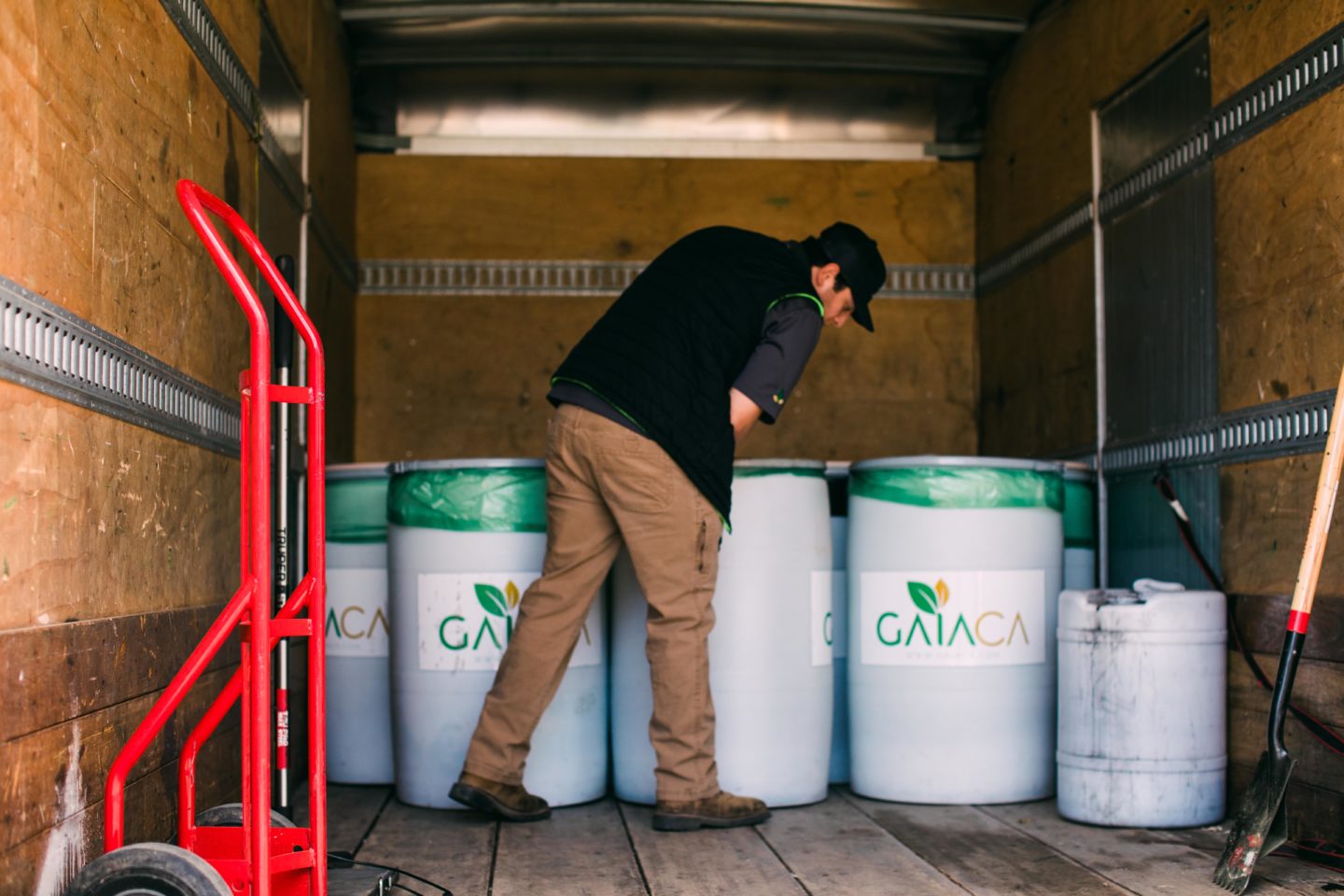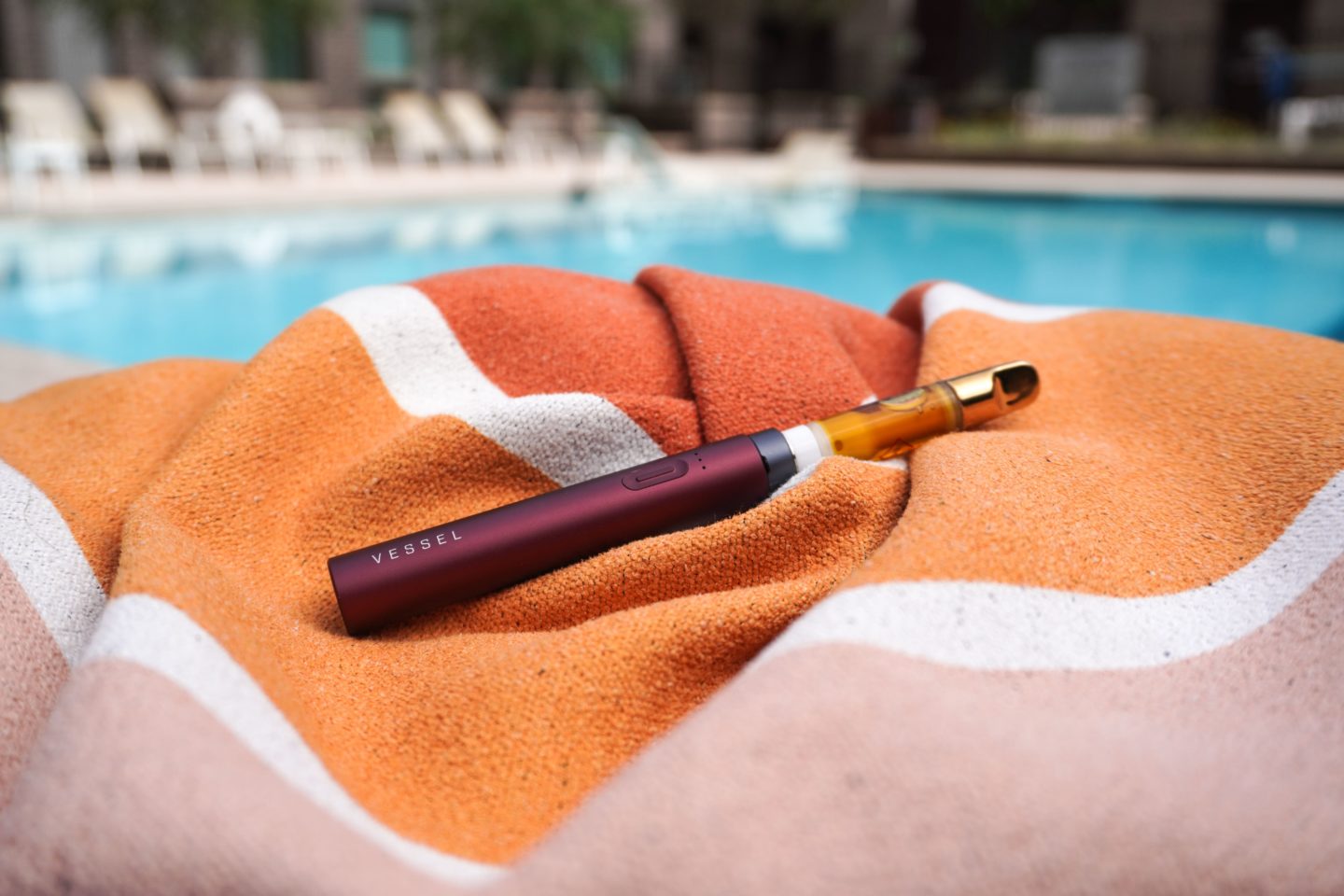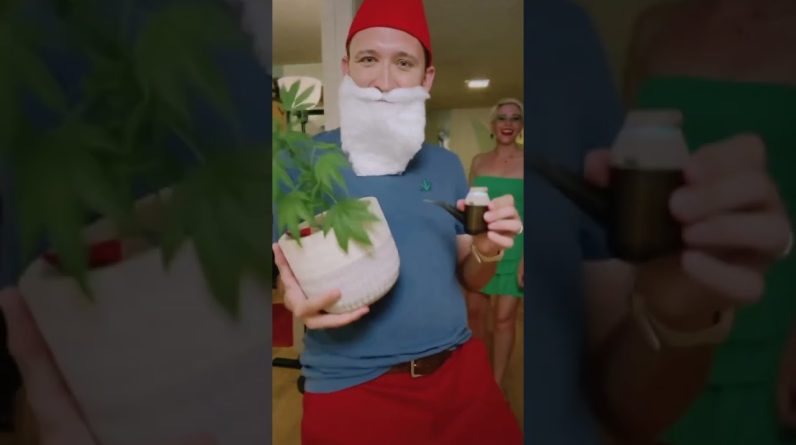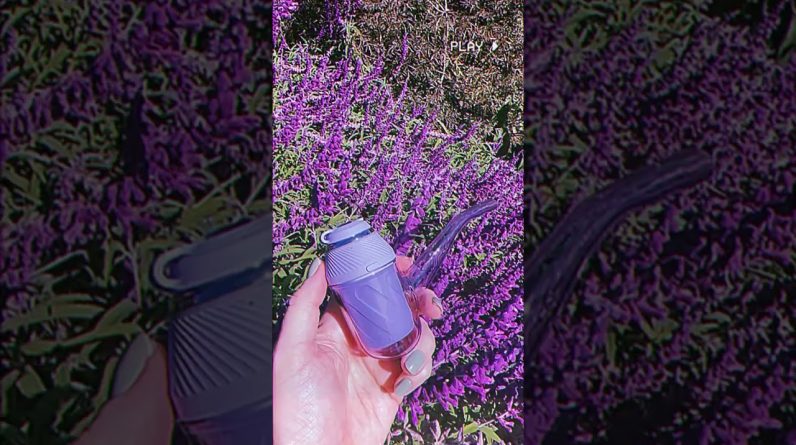The cannabis industry produces tons of waste. From vaporizer cartridges to legally-mandated layers of cannabis packaging, the movement that grew alongside back-to-the-land environmentalists is now buried under a mountain of waste.
According to longtime cannabis activist Chris Conrad, no one talked about waste early on, though they did talk about using minimal packaging made from hemp. “Back then the movement was interconnected with the environmental movement and we never expected waste to be an issue,” he said. He pointed to vaping cartridges as the game changer, adding that “disposables are even worse.”
Compliant Waste Disposal is Critical
California has two main cannabis waste processors, GAIACA Waste Revitalization (GAIACA) and Cannabis Waste Solutions (CWS). Andrew McGinty, CEO of CWS has over 15 years of experience in hazardous waste management, and knew this new industry could use his experience. He founded CWS in late 2018 and began attending cannabis events and hearings in Sacramento. GAIACA was co-founded by CEO Jonathan Lee in 2016 to do two things, “manage cannabis waste in the most compliant manner, and ensure the environment is protected.”
McGinty says Washington operators have sent nearly 2 million pounds of plant waste to landfills since commercial sales of adult-use cannabis began in 2014. The largest volume of waste for both CWS and GAIACA is biomass from cultivation and trimming, which CWS converts into energy to power their operation and GAIACA composts. Other major categories of waste, in order of most to least, are: Rockwool/grow media, soil, packaging waste, debris contaminated with cannabis, and the smallest category is hazardous waste like spent solvents and batteries. CWS has a method to recycle rockwool, which is “a big hurdle.” Coco coir and soil are compostable, and other wastes are rendered and sent to the landfill or hazardous waste facilities for specialized disposal.
“What people don’t realize is that proper waste disposal is the responsibility of the client,” said Lee, “If waste is not managed compliantly, this can be very costly to operators.” Lee brought up the cautionary tale of WellgreensCA, an extractor who illegally dumped their spent solvents. Now, those involved are looking at hefty fines and federal jail time. “Maybe companies save money in the short term, but look at the long term ramifications of illegal dumping,” said Lee, “The risk is so much greater than the reward.” Due to a quirk in California’s original cannabis regulations, all waste had to be rendered unusable and unrecognizable at the premises that generated it, rather than any licensed premises. As a result, both GAIACA and CWS designed custom rendering trucks that can go to any licensed premises to render their waste while cameras record the entire process.

Both companies cite changing market trends as resulting in more waste, specifically cannabis oil extraction, which is used in vapes, topicals, edibles, or dabbing. “We are on the verge of oils being mass produced,” said McGinty, “Companies are running in the tons now.” He pointed to products like the Puffco Peak making dabbing “more accessible” as a reason for increased oil use. GAIACA is seeing a big increase in spent solvents, like ethanol, and contaminated post-extraction biomass. While GAIACA does not incinerate any of their biomass, they do send spent ethanol to energy facilities because destroying it “generates a lot of energy.”
In addition to oil waste, both companies are seeing more vape waste but have methods to recycle vapes and batteries. “The ‘disposables’ are much harder to recycle because batteries are federally regulated, so they need to be entirely disassembled,” said McGinty, adding “I don’t think we should have ‘disposable’ vapes at all.” McGinty agreed that while you can’t prove vape batteries are causing fires at waste facilities, “there has been an increase in fires” at those facilities. He explained that lithium reacts with water, and waste facilities use water to control dust, so if a battery in a puddle is run over it can cause a fire.
A Solution In the Works for Vape Waste
That mountain of waste has grown too large to be ignored, and thanks to the leadership of the National Stewardship Action Council (NSAC) and cannabis businesses working with them, there is a solution in the works for vapes.
Heidi Sanborn, Executive Director of the NSAC, has spent the last 32 years “protecting people and the planet” by reducing the amount of waste generated and finding innovative ways to recycle. Within their first six years, the NSAC successfully got six bills signed into law. Sanborn is no stranger to combative industries, and those wins took years of advocacy and education.
“I relish working with people to solve big problems to make the world better,” said Sanborn, “I don’t relish legislative fights.” Despite that, she has been in an unwilling battle with the tobacco industry over efforts to regulate single-use tobacco waste, which were unsuccessful due to extreme pressure from tobacco lobbyists. Sanborn was a driving force behind SB 54 (Allen), “the strongest [Extended Producer Responsibility] (EPR) bill in the nation,” which was signed into law by Governor Newsom and will reduce “not just plastic but all types of packaging” waste in California. After that major victory, Sanborn hopes “the tobacco industry should be paying very close attention,” and they need to “come to the negotiation table or they will be on the menu.”
In contrast to the tobacco industry, Sanborn says that the majority of cannabis companies have been “great” and “they have been working with us on AB 1894 (L. Rivas).” Specifically, Sanborn has been in talks with some of the largest players in the state including the California Cannabis Industry Association, STIIIZY, Vessel, and GAIACA. Sanborn says we “are working on the bill collaboratively, to ensure no company can advertise or market a cannabis vape as ‘disposable,’ implying it can go in the trash.” It goes further, requiring vapes to be accurately marketed and advertised as “household hazardous waste,” which must be taken to state-permitted disposal facilities. At its core, AB 1894 is a consumer education bill that only changes how cannabis products are advertised and marketed so costs should be minimal for companies.
Why Sustainability is Good Business

James Choe is the CEO of Vessel, a vape company putting sustainability front and center. Choe didn’t mince words, saying there “has been some greenwashing” in the vaping industry. Determined to lead by example, Vessel is actively finding ways to be more sustainable in their product design and packaging. Choe says that while it “pains” him to put their high-end products into simple packaging, they are “moving to a plain box with one color of ink,” because it is easier to recycle and more sustainable. According to Choe, “Most of our business is direct-to-consumer, we already sold them online, we don’t need to sell them again with the packaging.”
One reason cannabis packaging is so voluminous are regulations requiring it be childproof. To minimize packaging waste, Choe says Vessel “got our vape cart certified as childproof, so it doesn’t need extra layers of childproofing.” Unfortunately, many brands are not willing to pay the “extra 10 cents.” Choe highlighted the need to educate consumers as well as companies. Vessel’s digital team surveyed its customer base and found that “65% might not care about the environment.” Vessel is partnered with GAIACA for their Get Recycling Now (GRN) program for battery return through dispensaries and the mail. Choe says that “the day of EPR for cannabis is soon,” and Vessel is trying to stay ahead of the curve.
Sanborn was clear that sustainability is good for businesses. “The young generation vote with their dollars and are aware of companies who mistreat workers or the environment,” she said, “If you’re not catering to them, they will find a brand that caters to them and their worldview.” Sanborn echoed Choe’s warning about greenwashing, “If you are greenwashing and get caught, they will not buy from you again.” Conrad agreed with Sanborn, saying “Solving the waste problem will be a boon to the legal market because people will feel better about the products they are buying.”
The post From Back to the Land to Burying the Land appeared first on High Times.
Source: https://cannabisworld.biz/2022/07/13/from-back-to-the-land-to-burying-the-land/





